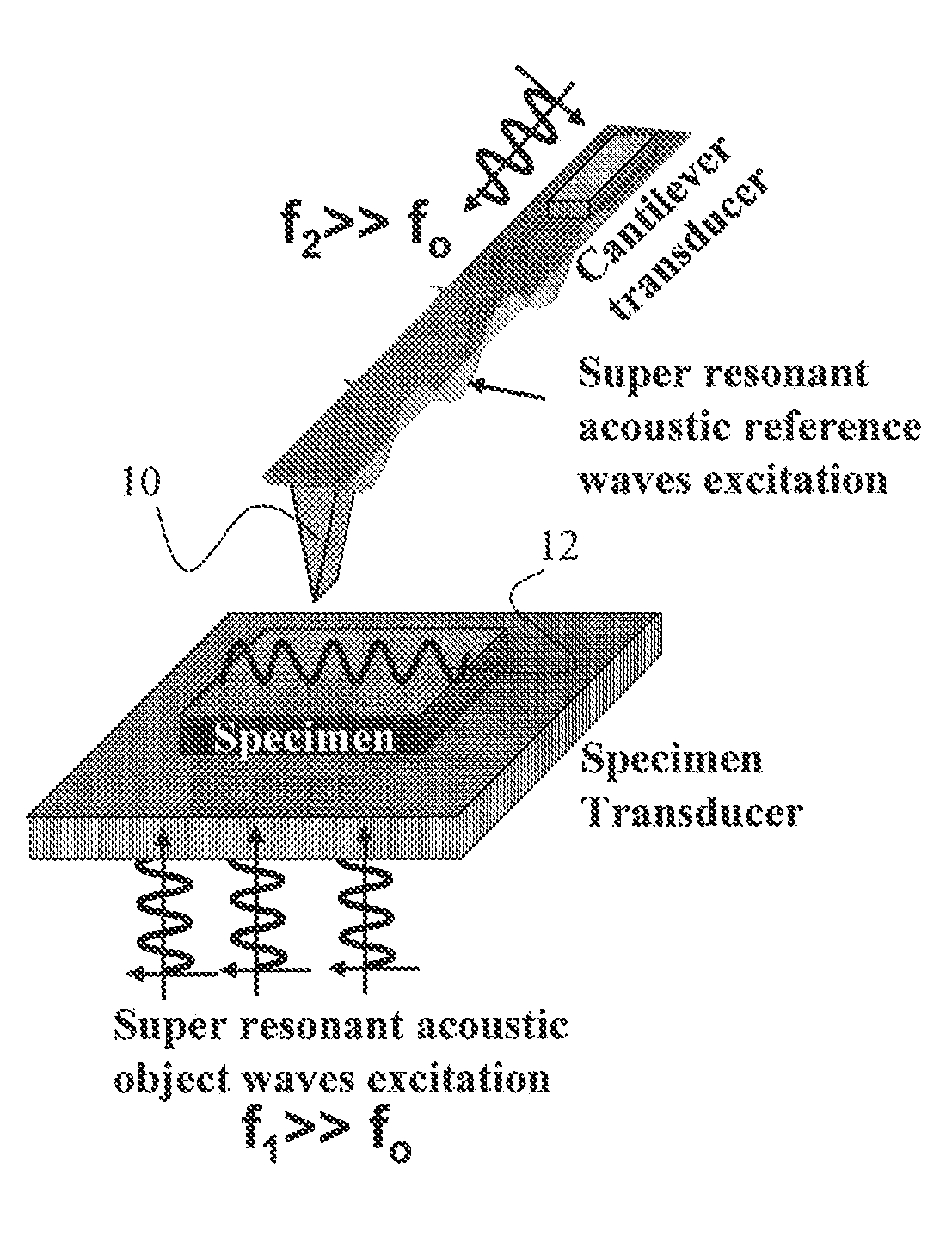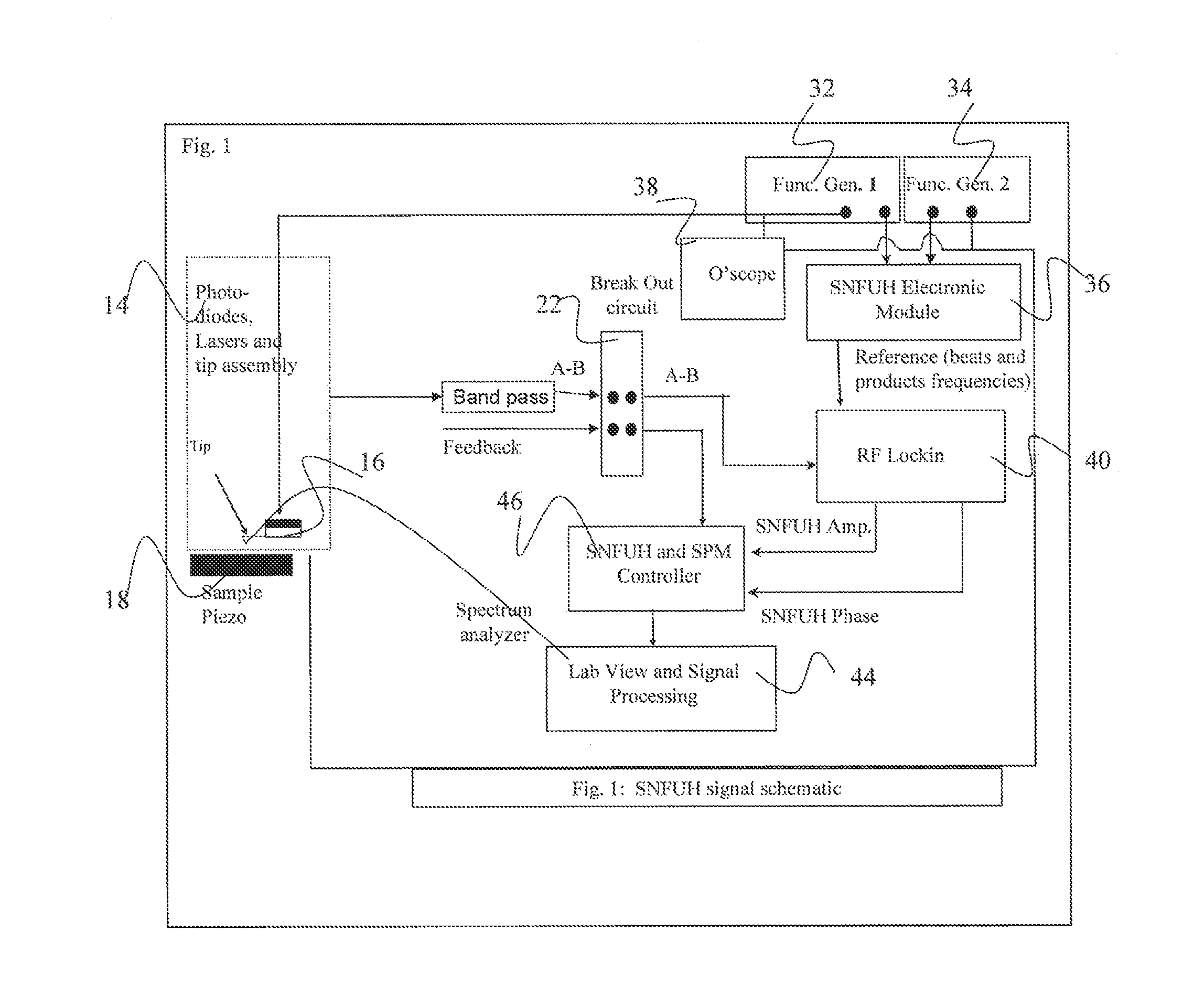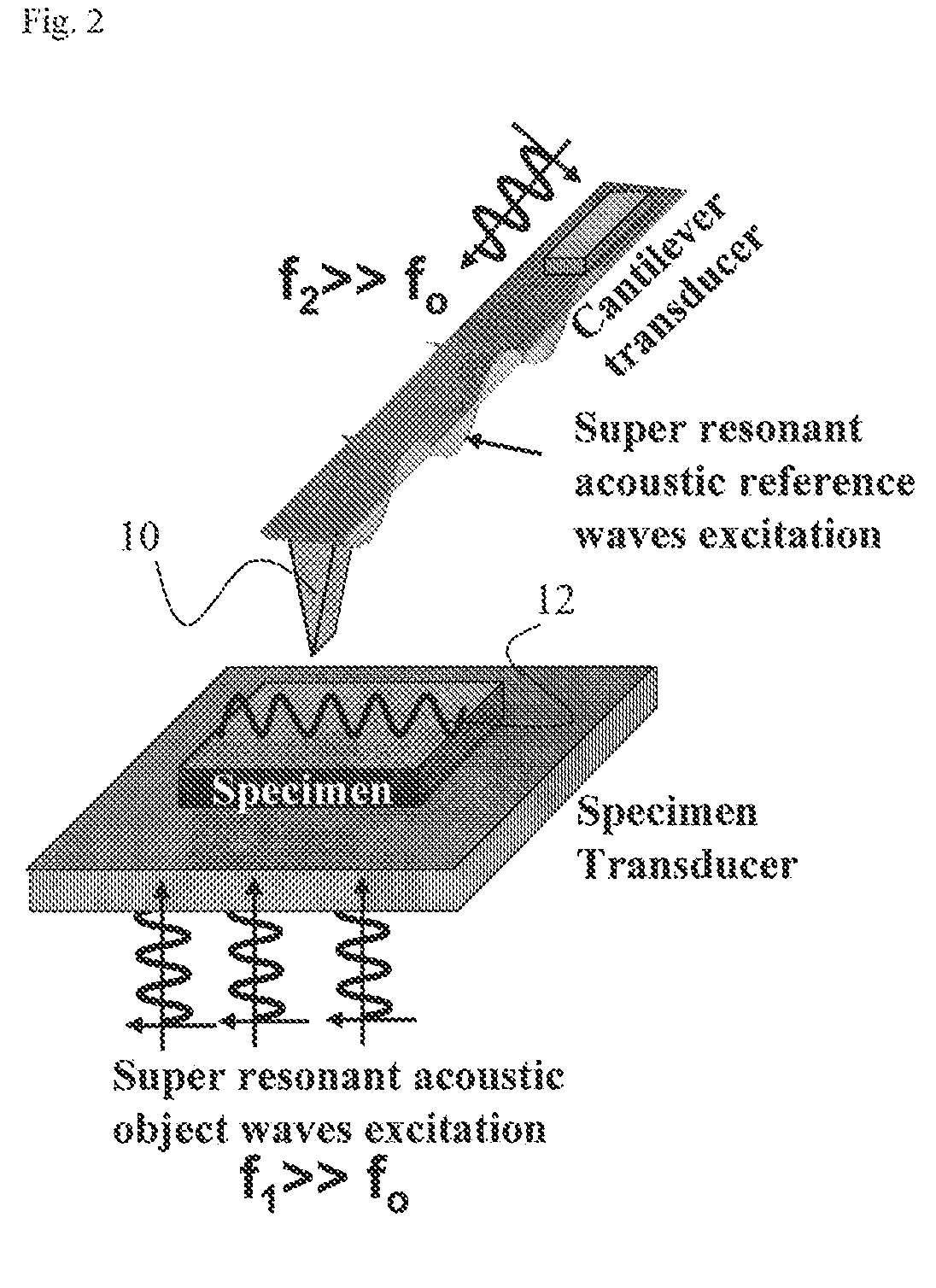Scanning near field thermoelastic acoustic holography (SNFTAH)
a thermoelastic acoustic holography and near field technology, applied in the direction of mechanical measurement arrangement, mechanical roughness/irregularity measurement, instruments, etc., can solve the problems of ultrasonic microscopy, high resolution, and acoustic microscop
- Summary
- Abstract
- Description
- Claims
- Application Information
AI Technical Summary
Benefits of technology
Problems solved by technology
Method used
Image
Examples
Embodiment Construction
[0037]Certain embodiments of the present invention are directed to a nondestructive, high resolution, sub-surface nanomechanical imaging system. The system is capable of directly and quantitatively imaging the elastic (static) and viscoelastic (dynamic) response of a variety of nanoscale materials and device structures with spatial resolution of a few nanometers depending on the ultrasonic frequencies. For viscoelastic high resolution sub-surface nanomechanical imaging the target maximum probe frequency is around 5-10 GHz, for example. In an embodiment, the maximum relative phase resolution at this frequency is estimated to be 0.001° leading to a viscoelastic time resolution of less than <1 ps. The instrument of certain embodiments of the present invention operates in a manner similar to commercially available scanning probe microscopes (SPMs) in that quantitative, digital, rastered, nanometer-scale images are obtained of the sample elastic modulus, and sample viscoelastic response ...
PUM
| Property | Measurement | Unit |
|---|---|---|
| frequency | aaaaa | aaaaa |
| frequency | aaaaa | aaaaa |
| resonance frequencies | aaaaa | aaaaa |
Abstract
Description
Claims
Application Information
 Login to View More
Login to View More - R&D
- Intellectual Property
- Life Sciences
- Materials
- Tech Scout
- Unparalleled Data Quality
- Higher Quality Content
- 60% Fewer Hallucinations
Browse by: Latest US Patents, China's latest patents, Technical Efficacy Thesaurus, Application Domain, Technology Topic, Popular Technical Reports.
© 2025 PatSnap. All rights reserved.Legal|Privacy policy|Modern Slavery Act Transparency Statement|Sitemap|About US| Contact US: help@patsnap.com



